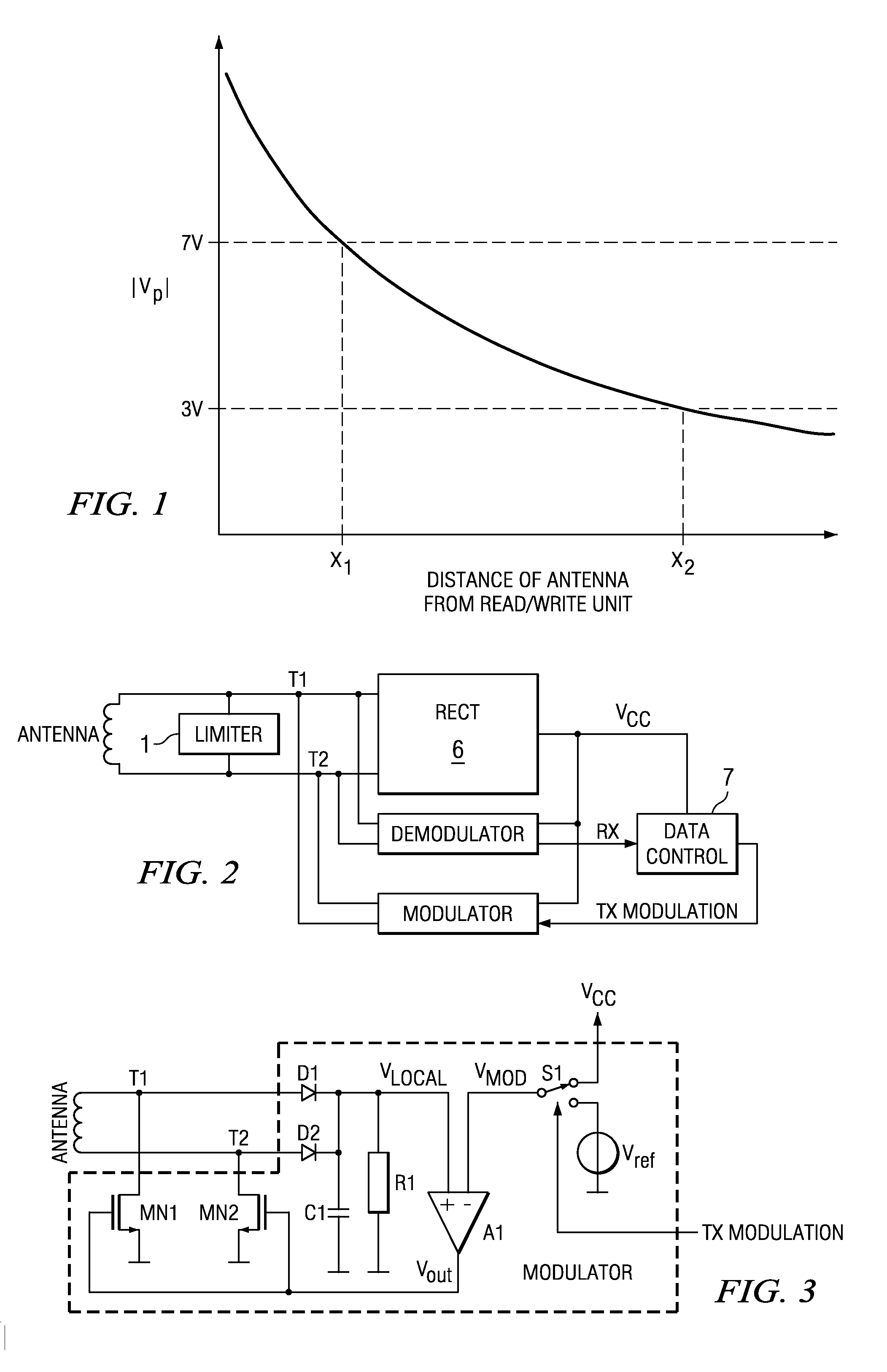Transponder back scatter modulator with regulated modulation depth
a back scatter modulator and transponder technology, applied in the field of rfid transponders, to achieve the effect of precise and constant modulation depth and precise regulation of antenna voltag
- Summary
- Abstract
- Description
- Claims
- Application Information
AI Technical Summary
Benefits of technology
Problems solved by technology
Method used
Image
Examples
Embodiment Construction
[0014]FIG. 1 is a graph of the magnitude of the peak transponder voltage as a function of the distance of the transponder from a read / write unit for an RFID transponder. The modulus (magnitude) of the peak voltage of RFID transponders as a function of the distance of the transponder (antenna) from the read / write (R / W) unit is shown in FIG. 1, with specific distances X1 and X2 being indicated for former and up-to-date transponders, respectively. For example, present devices are able to withstand voltages of up to 3V, whereas former designs used integrated circuits that were able to withstand 8V. The rectifier generates the supply of the whole transponder by rectifying the antenna voltage. The voltage drop over the rectifier, together with the reduced limiter threshold of 3V, results in a supply voltage of only about 2.5V when the maximum distance of the transponder away from the R / W unit X2 is 30 cm, for example, whereas former designs with a limiter threshold of 7V were able to oper...
PUM
 Login to View More
Login to View More Abstract
Description
Claims
Application Information
 Login to View More
Login to View More - R&D
- Intellectual Property
- Life Sciences
- Materials
- Tech Scout
- Unparalleled Data Quality
- Higher Quality Content
- 60% Fewer Hallucinations
Browse by: Latest US Patents, China's latest patents, Technical Efficacy Thesaurus, Application Domain, Technology Topic, Popular Technical Reports.
© 2025 PatSnap. All rights reserved.Legal|Privacy policy|Modern Slavery Act Transparency Statement|Sitemap|About US| Contact US: help@patsnap.com


